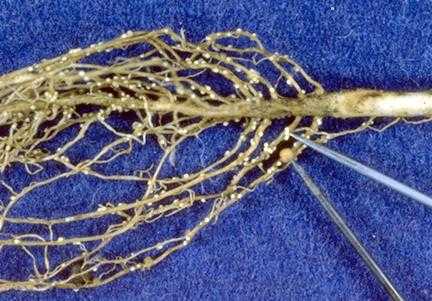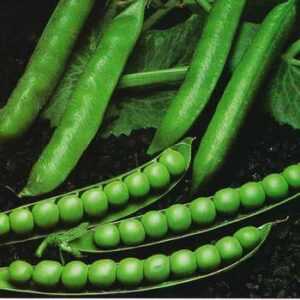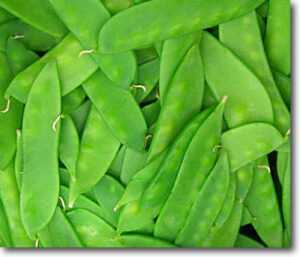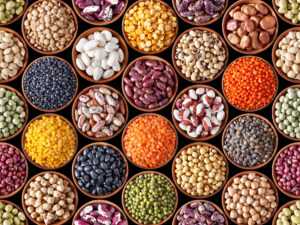A new New Year of the Trees has commenced, and we are delighted to present the new, new blossom from Ilana of Shana B’Gina: A Perpetual Shana B’Gina Calendar, with monthly information pertinent for every year, tips and reminders on what’s best to do each month in your garden, and loads of space to write your own personal perpetual dates, including birthdays, seeding and planting times, and more. Take a look:
ORDER THIS AMAZING CALENDAR VIA OUR ORDER SYSTEM TODAY! And best wishes for a Happy New Year of the Trees to all!
_________________________
Beneath every successful vegetable is a successful legume
In honor of the green fava bean and the festive bevy of peas over the past few months, I’ve decided to re-explore their roots by conducting an in-depth exploration into the privileged, wonderful clan that these pods claim – the Legume family. The expression “in-depth” is not accidental. For indeed, there is so much that happens deep underground in this family, close to the roots (which may be the case in every family, true).
But let us first get acquainted with the clan: The prestigious legume pedigree belongs to the green bean, pea, fava bean, lubia, soy, lentils, hummus and the mung bean. Lesser-known members of the family are the lupine, vetch, fenugreek (chilbeh), clovers and alfalfa. And, peanuts and even carobs, which hardly resemble their relatives at all. This family includes almost 20,000 varied species! In our field, we raise members from the family branch that are eaten in green pods: peas (two species to be elaborated upon), the fava bean, the green bean, lubia, yard-long bean and green soy (edamame).
The nice thing about this family, when discussing a weekly seasonal box such as ours, is how they interchange throughout the seasons. Sometimes I have a feeling that like on the old kibbutz, some family member is delegated charge for the “work roster,” making detailed charts to vouch that (almost) no week passes without a family representative. To begin the description, we can use the seasonal display of legumes in our Chubeza boxes, commencing at winter’s start with the first pea pods that grow chubby on the bushes. First (at the end of December) comes the sugar pea (aka snow pea or Chinese pea, the big thin one). She is followed by the garden pea that loathes the late-summer heat, but is fine with being seeded in November. It ripens in January. (This is the English pea whose pods hold those nice, round, green “Sunfrost-like” peas. The pods are not edible, but should not be cast away. See tips…)
Next in line are the fava beans that grew alongside the peas over wintertime, and usually ripen at the peak of winter, i.e., just about now. The peas and fava make return visits to our boxes for additional rounds till March or April, after which they run for their lives to escape the heat that they cannot tolerate.
Then, several weeks later in the middle of April, it’s the string bean’s big moment! Sowed three months earlier in February, this bean takes its time growing, due to the cool temperature. The next round of string beans, sowed a month later, will grow faster (a string bean can ripen some 50 days after being sowed). The string bean prefers moderate spring and autumn temperatures, which is why it arrives in our field over two periods. Simultaneous to the string bean’s entry on the scene, it’s time for the yard-long bean (a sub-specie of the lubia). This lanky legume appears in our boxes from the month of July, through the summer till the end of autumn.
During the lubia season, the edamame marches proudly into our boxes. This is the green soy pod, sowed together with the string bean but requiring 80-90 days to ripen. Thus, our edamame is expected to make its appearance around July-August, so we can enjoy our soy treats, a great green snack, during those warm summer nights.
And when the New Year is upon us in Tishrei, we are always happy to add lubia to the boxes, to take an important role in the holiday feast with its own special blessing. The lubia continues to bear fruit until the cold November temperatures spur their farewells – and on their way out, they briefly reunite with their spring rendezvous partner, the string beans, coming in for a return appearance. At this point, we have already sowed the peas and fava beans, and a new round of legumes begins.
This description is lacking something, because it only describes what you see in your boxes. In truth, way down under in the depths of earth, the legumes are working their real magic: they are busy “fixing nitrogen.”
!!!!#####^^^^^^****?????
Fine, I get it. You would like an explanation in plain English, not in “agriculturalish.” So, here goes: among other things, plants need nitrogen in order to grow. Seventy-eight percent of the air is nitrogen, but animals and plants cannot make use of it because this nitrogen comes in a composition that is inaccessible to them (N2, while they need it in N3, i.e., the ammonia used to construct amino acids, protein and others).
This is where the legumes come in to save the day. The roots of these plants run very deep and utilize the nutrients in the lower strata, then proceed to grow small nodules of bacteria that work symbiotically with the legumes. These bacteria are able to receive and absorb nitrogen from the air. They take the nitrogen from the air caught between the clumps of earth and transform it into nitrogenic compounds accessible to the plant, which is transferred from the root to the rest of the legume plant.
In return, the bacteria take the nutrients that the plant produced via photosynthesis. Thus, we receive a plant chock-full of nitrogen. The legume plant will use some of this nitrogen in order to build the protein in the fruits and seeds it produces, but if we cut it down as it blooms, chop it up and mix it in the earth, it will leave most of the nitrogen in the earth – and a considerable amount of organic material that will greatly improve the earth’s composition and its fertility. Similarly, reburying the plants after they have grown edible pods improves available nitrogen levels within the earth. This is why legumes do not need any additional fertilization like the rest of our vegetables. They get by just fine on their own, thank you. (Well, almost on their own, with a little help from some bacterial friends.)
Nitrogen fixing nodules on roots:

We discussed the assistance provided by the legumes to their fellow plants, but we living creatures are also big winners. The nitrogen that became available is converted in the (dry) legume seeds to protein, minerals and other good things, and when we eat them, we too benefit from all this symbiosis. What do we get? Protein (in varied quantities, depending on the specific legume) – legumes are the best protein providers for vegetarians – and also: calcium, iron, and dietary fibers. They contain essential fatty acids (linoleic and linolenic) that are quite beneficial for diabetics (with their low glycolic index), assist in lowering cholesterol and preventing heart disease, and as a gluten-free complex carbohydrate, they are a good carb substitute for celiacs. Green legumes, like those we provide in Chubeza boxes, are similar in their nutritional values to green vegetables: they contain vitamins A, B, and C, iron, potassium, and additional minerals and less protein.
And most important – they can be used to prepare delicious food. Legumes have always been an important part of diets across the globe. The type of legume varies in different places: Middle-Easterners eat hummus and the fava bean (ful); Americans (starting with the natives) eat beans of all types (and there are many), the Japanese eat soy. But they all thoroughly enjoy it!
Some useful tips for cooking green legumes:
- Green Cooking: Green cooking is blanching green vegetables in boiling salted water for a short period (half-a-minute to five minutes, depending on the vegetable) in order to prepare them for further cooking, while preserving their bright green color. Sometimes green cooking is sufficient in itself for the green vegetable — like in salads, such as the Nicoise, which calls for blanched green beans. The water must be at boiling! If not, the vegetable will leak its liquids into the water, and its color will quickly fade. The hotter the water, the shorter the cooking, and the less harm done to the vitamins.
- When you add fresh green pea pods to vegetable soups, this acts as a sort of spice. You only need a few pods to make the soup taste totally different. Try it!
- Despite the suggestion to peel the fava bean (double peel), you can certainly cook and eat fava beans within their pods! Check out our recipe section for some ideas.
- Instead of discarding the empty pods of garden peas or fava bean, freeze them for the next time you make soup stock, then add to the pot and take advantage of their excellent nutritional components.
May we all have a wintery-sunny, green, yummy and filling week!
Alon, Bat-Ami, Dror, Oreen and the Chubeza team, nibbling away in the fields
________________________________________
WHAT’S IN THIS WEEK’S BOXES?
Monday: Kale/Swiss chard/spinach/totsoi, lettuce/arugula/mizuna, celery/celeriac, cauliflower, cucumbers, tomatoes, beets/potatoes, green fava beans/snow peas or garden peas/Jerusalem artichokes, broccoli, onions/leeks. Small boxes only: parsley/coriander/dill.
Large box, in addition: Daikon/cabbage, fennel/turnips, parsley root, carrots.
FRUIT BOXES: Bananas/lemons, red apples, pomelit, oranges.
Wednesday: Kale/Swiss chard/mizuna/totsoi, lettuce, parsley/coriander/dill, cauliflower/cabbage/Jerusalem artichokes, cucumbers, tomatoes, green fava beans/snow peas or garden peas/potatoes, broccoli, onions. Small boxes only: celery/celeriac, beets/daikon/fennel/turnips.
Large box, in addition: Leeks, parsley root, carrots, beets and fennel.
FRUIT BOXES: Bananas/lemons, red apples, pomelit/red grapefruit, oranges/clemantinot.





